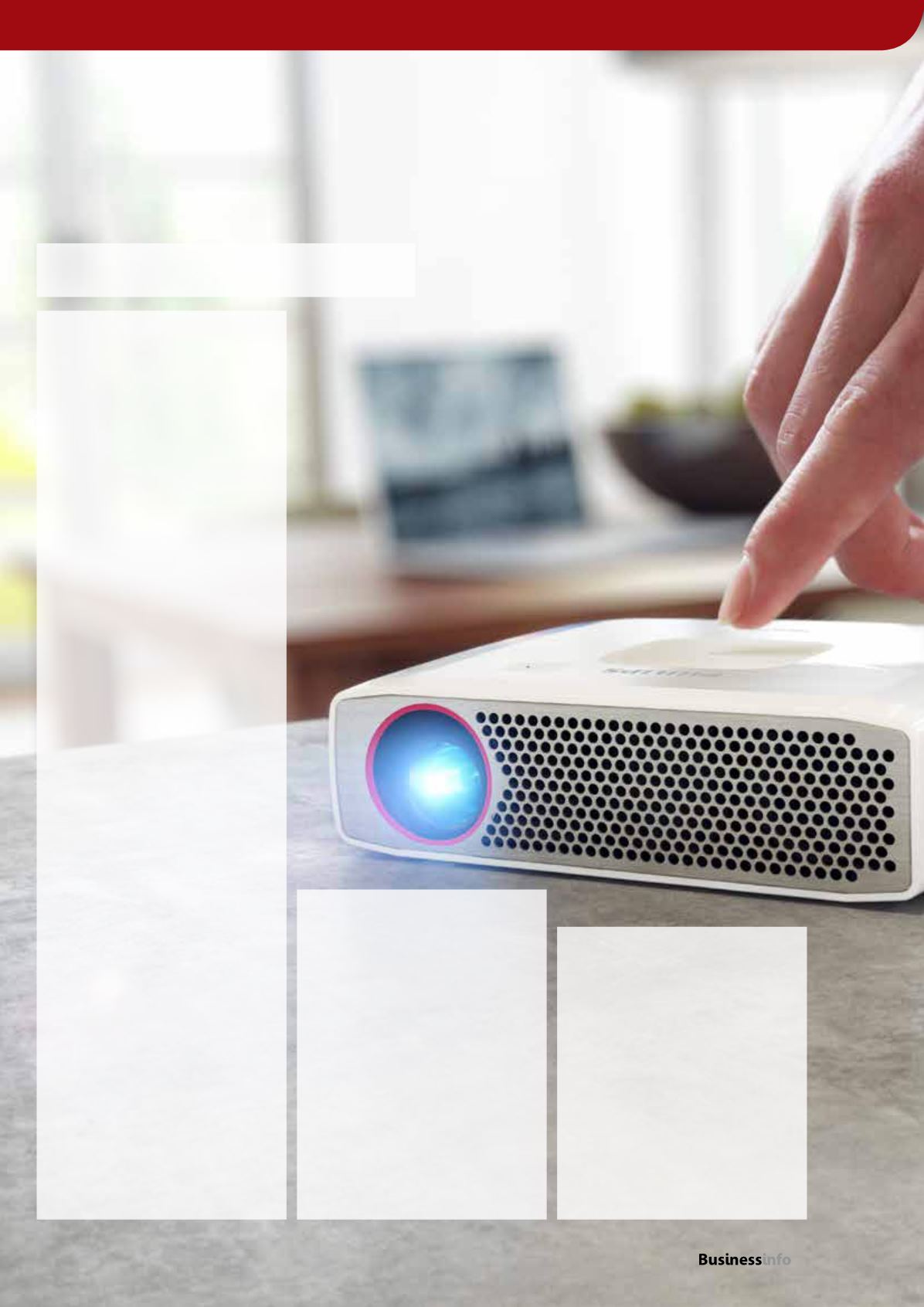
A Philips PicoPix projector is the perfect
companion for everyday teaching. It is
great for visual stimulation, for use in
the classroom, in breakout groups and
even on field trips.
One school that truly understands the
importance of visual support materials
for learning is St Giles in South Croydon,
Surrey. St Giles is a specialist school
for pupils with physical disabilities and
sensory needs, with ages ranging from
four to sixteen. Most of the pupils also
have learning difficulties associated with
their disabilities including some who
have profound and multiple learning
difficulties (PMLD).
To support the pupils’ sensory
needs, the school purchased a Philips
PicoPix projector. Lynne Castle, St Giles’
specialist ICT assistant, explains: “We
wanted a small, compact projector that
was portable and battery-powered, so
we could use it in a variety of teaching
situations.”
For Lynne, the Philips PicoPix projector
fitted the bill perfectly because of its
small size and internal battery, making it
a versatile aid for multi-sensory teaching.
The Philips PicoPix is a small and
light pocket projector that can be easily
connected to various devices, SD cards or
a USB stick to access digital content. The
addition of an integrated media player
means that the PicoPix can be used
independently of other input devices,
while the internal battery gives users the
flexibility to project and share pictures or
videos wherever they want.
“This projector is great for projecting
from an iPad. I have used it to project
onto white paper, boxes, pillows, ceilings,
plant pots and different surfaces to make
the images interesting for the children.
They find the iPad fish tank app very
soothing when it’s projected onto paper.
As well as multi-sensory therapy, the
projector is useful for practical lessons.
I’ve used it to project the solar system
onto the ceiling to talk about the order of
the planets and their movements. It’s so
much more informative than a diagram.
We also use it to project a timer in PE so
that the children know how long they
have left for an exercise,” adds Lynne.
“We have used the PicoPix with
pupils with limited speech with an
app that converts sounds to projected
patterns. The children with speech
difficulties can make a vocal sound
and see an image projected onto the
wall. It’s fun for them, so it reinforces
their awareness of the different sounds
they can make and promotes their
vocal communication; there is a real
interaction between what they see
visually and the vocal sounds they make
and it is exciting!”
In fact, says Lynne, what you can do
with the PicoPix is limited only by one’s
imagination. “It’s basically trial and error.
In a multi-sensory class I’ve projected
an umbrella above the children with the
sound of rain and laid bubble wrap for
them to walk on or roll-over for those in
wheelchairs. It just adds to the richness
of the experience.”
The PicoPix has also proved useful
in after-school activities. “I used it on a
tripod for our St Valentine’s disco and
projected hearts in different places. The
children played ‘first to the heart’ and
‘musical hearts’. It was good fun.We’re
very pleased we purchased the PicoPix;
it wasn’t expensive and it’s proved to be
a very useful teaching aid for us,” Lynne
concludes.
Case study: St Giles School
magazine
23
01732 759725


